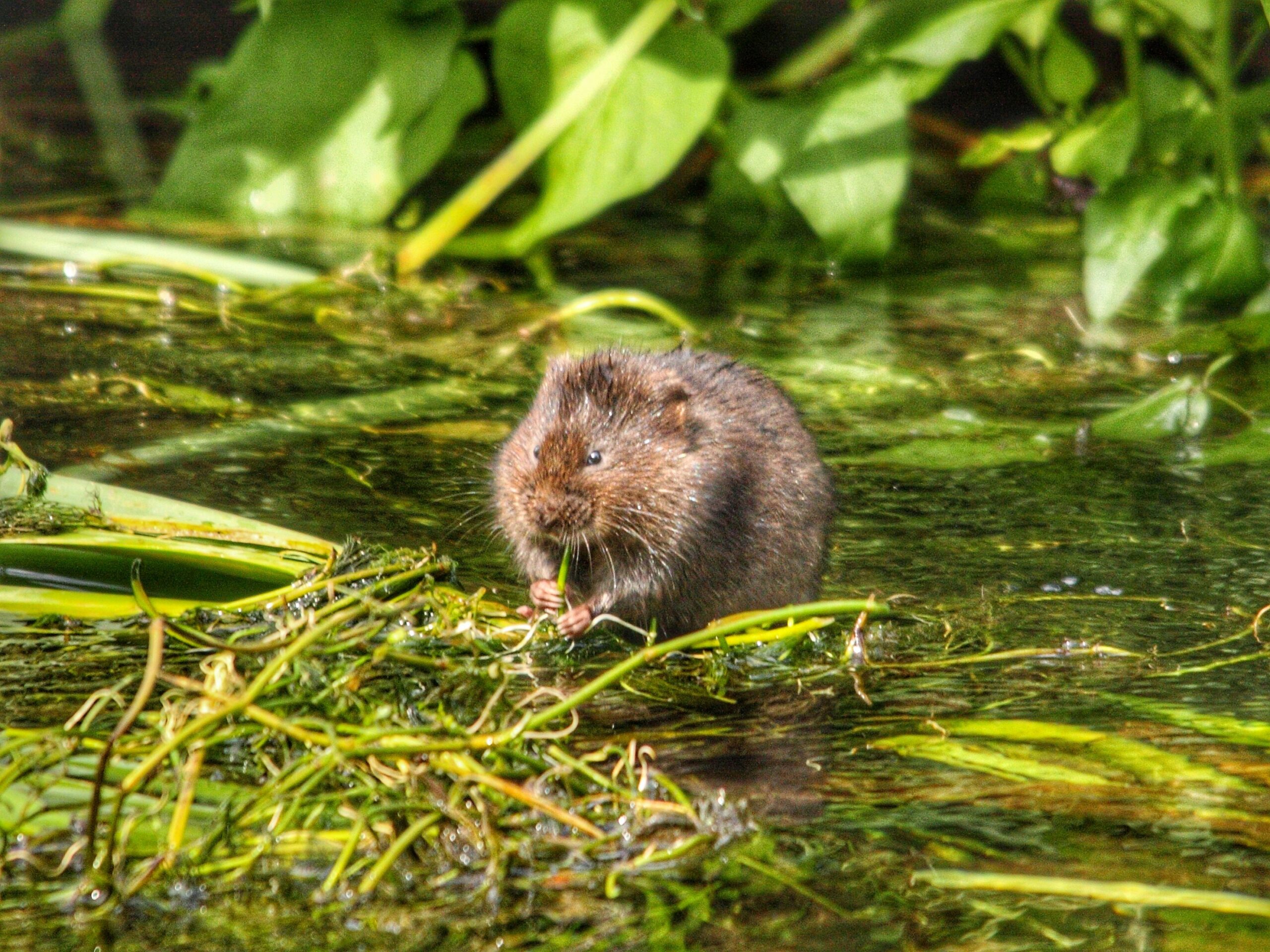Image description: a water vole nibbling on river vegetation. Image by Jonathan Ridley on Unsplash
150 water voles have been released in Surrey, Sussex and Hampshire along the River Wey as part of plans to return the animals to the area, having not been seen in about 20 years.
The voles were released at six carefully chosen sites on the upper reaches of the Wey by a partnership of local people, landowners and organisations, led by the National Trust, the Environment Agency, the River Wey Trust and the South East Rivers Trust.
Meanwhile, 82 water voles were also introduced to the wild at Seaton Wetlands in Devon by Wild East Devon, which manages the site.
‘Locally Extinct’
Water voles are Britain’s fastest declining mammal and were previously declared locally extinct in the Rivery Wey catchment.
Population figures have been in rapid decline since 2000, having plummeted by 93% in England during the 20th Century, largely due to habitat loss and predation by non-native American mink.
Comeback of a key species
Water voles are a key species, vital for healthy river ecosystems: Their grazing creates space for rare plants to grow; they provide food for predators such as otters and barn owls; their burrowing helps shape riverbanks and habitats.
The River Wey project is the first in a programme of reintroductions over the next two years which will aim to create a sustainable population of water voles, that can breed and flourish, repopulating 1,000 sq km (386 sq miles) of the River Wey catchment area – equivalent to 1 percent of England, or 2.5 times the size of the Isle of Wight.
It is hoped that the repopulation programme will eventually return water voles to the River Wey in larger numbers, with 192 released so far.
Ecologist Derek Gow said he and his team had released about 50,000 water voles into the wild across Britain.
